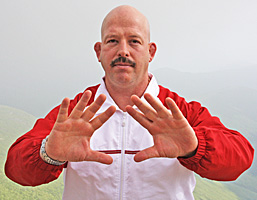In Willy Wonka and the Chocolate Factory, Veruca Salt exclaims, “Hey Daddy, I want an oompah loompah. I want you to get me an oompah loompah right away.”
“Alright, alright Ruca,” replied Mr. Salt. “I’ll get you one before the day is out.”
This was too much for the Verucabrat, who immediately demanded, “I want an oompah loompah noooow.”
“Can it you nit,” popped Violent Beauregard, who was no prize herself in regard to patience..
The notion that good things take time is lost to so many.
It’s a pity because the feeling of being unable to get what you want immediately after beginning, especially with fitness, usually leads to frustration, bad decisions as well as injuries.
A few years back I was working on a strength feat, wherein I was taught to make gradual progress. Everything was going according to plan, until a friend, who had already accomplished the feat, prodded me to make it happen much, much faster.
Why bother with the slower and steadier approach? Let’s do it today, preferably within minutes.
Even though I knew better, even though I knew the dangers, I caved into the temptation to get it ALL NOW.
The result: a dumb thumb injury that took almost one year to completely heal.
If I had stayed on the correct course, I would have accomplished the feat in three to six months. Instead, six months after “getting out of my comfort zone,” I was still nursing the injury.
When I advise people on various exercises and methods of training, I usually say, “Let’s look at this as a minimum six-month project, but it may take longer.” If the person thinks that six-to-twelve months is too long, then there’s no point in getting started. This doesn’t mean you won’t get ANY results for six months. You WILL get incredible results and quickly – but the biggest bang for your bucks, the biggest return on investment, comes cumulatively. Your routine gathers momentum that blasts through all barriers, just not within the hour.
A few months ago, a man contacted me to get my help reaching his goal of 500-straight Hindu squats. This is a common request, but many people just don’t want to hear that it takes time to reach the 500-level.
They want to be at 500 now.
Back in 20002, I went abroad to teach a few seminars. While there I met a man who got my book and DVDs on Combat Conditioning.
After he read the instructions for Hindu squats, he started doing them with the intention of doing 500 reps in a single workout.
It took him an hour, but he did do it, albeit incorrectly. He was sore for DAYS afterward.
[Note: When you can truly do 500-straight Hindu squats the proper way, you will finish in 15 minutes, or less.]
After the man told me of his accomplishment, I asked him how often he does the exercise now. He told me he hasn’t done Hindu squats since the day he did 500.
You want to know why?
It’s because he did what so many people wrongfully suggest. He pushed himself “out of his comfort zone,” and afterward he couldn’t get himself to go there again.
So I switched him to the “get into your comfort zone” approach, which I learned from my study of Psycho-Cybernetics, as well as my practice of martial arts.
[Note: Incidentally, you will NOT find a single instance in Psycho-Cybernetics, where Dr. Maltz tells you to “get out of your comfort zone.”
In fact, I will emphatically state that the entire book teaches you to get INTO your comfort zone and allow it to expand organically.]
Anyway, after starting him out with the “comfort-zone approach,” he reached 500 reps in a row within six months, and kept doing them afterward, with ease.
One approach fried the man’s nervous system; the other gave him new life. One approach led to frustration and agony; the other to a feeling of personal mastery.
Which road will you choose to travel?
Here endeth the lesson!
Matt Furey

